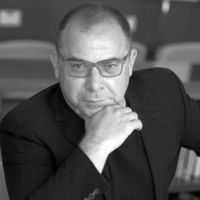Papers by Eleonora Bedin
INR 17, 2022
This article analyzes early Roman coin types from Ascalon (modern Ashkelon/Ashqelon) and Gaza por... more This article analyzes early Roman coin types from Ascalon (modern Ashkelon/Ashqelon) and Gaza portraying the deities Phanebalos, Asclepios Leontouchos, and Marnas, in order to shed light on trends of localism and their place within, and in the face of, globalizing processes. The discussion leads to new interpretations regarding the origins of these deities, as well as their function within the local routine.
Mediterranean Studies, 2021
Was there such a thing as a Mediterranean identity in antiquity? And if so, how are we to define ... more Was there such a thing as a Mediterranean identity in antiquity? And if so, how are we to define it? This article addresses these questions, focusing on maritime-based religious associations within Mediterranean societies and how these associations developed over time. Through an examination of the maritime, climatic, and geographical aspects of the human experience during the Hellenistic period, it is possible to evaluate the nature of Mediterranean deities and their common features across boundary lines of locality, nationality, ethnicity, and culture. The emerging picture suggests that the cross-cultural dimension of Mediterranean deities allows for the existence of a superordinate identity that may best be described as Mediterranean.
La Caria in età ellenistica era formata dal sinecismo di diverse popolazioni, elemento dettato pr... more La Caria in età ellenistica era formata dal sinecismo di diverse popolazioni, elemento dettato principalmente dal fattore geografico: convivevano assieme la cultura greca, data dagli Ioni d'Asia e dai Dori, e quella locale dei Lelegi e dei Cari.
Conference Papers by Eleonora Bedin

The strategic position of the port cities of Ashkelon and Gaza within the geography of the Near E... more The strategic position of the port cities of Ashkelon and Gaza within the geography of the Near East made them crossroads of trades and cultures from the Early Bronze Age onwards. As junctions between the Via Maris, the trade route that run along the coast connecting Egypt with Phoenicia, Syria, and Anatolia, and the frankincense route that stretches from the Mediterranean through the Negev until India and beyond, Gaza and Ashkelon had experimented a continuous passage of peoples that had shaped their cultural and religious horizons. However, the two cities proved the maintenance of a strong local identity through time shown by the survival of their ancestral deities, as well as the self-representation left by their citizens around the Mediterranean. Through the analysis of Hellenistic epitaphs of Ashkelonite and Gazan merchants dead abroad, the continuity of worshipping of local deities, and the syncretism that involved them, Ashkelon and Gaza will be presented not only as junction and cross-roads of identities, but also as carriers and vehicles of a strong cultural originality. Moreover, from this analysis, also the extent of their intrinsic Mediterranean dimension will emerge.











Uploads
Papers by Eleonora Bedin
Conference Papers by Eleonora Bedin